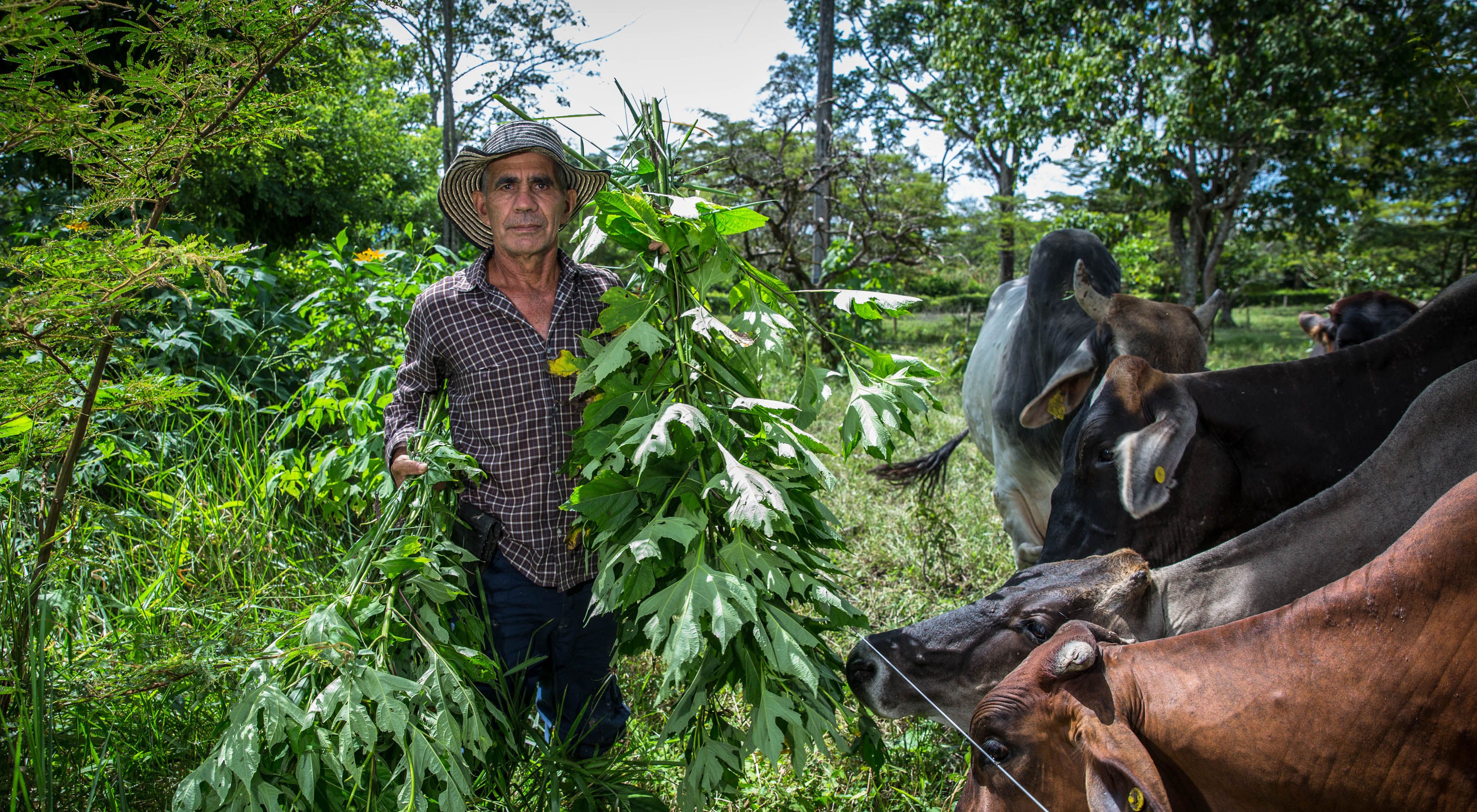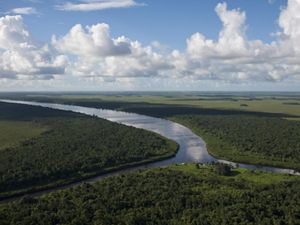More Food, Less Habitat Loss
Increasing the environmental, economic and social benefits of Colombia's productive landscapes.
Though Colombia is rapidly losing its natural landscapes due to an advancing agricultural frontier, we believe that increasing food production is possible without habitat loss. The Nature Conservancy shares its science and builds transformational partnerships across sectors to make sustainable ranching and farming practices the norm in Colombia.
Using TNC’s Healthy Agricultural Systems (HAS) approach—which focuses on increasing production without affecting the soil, water and existing biodiversity of a region— Colombian farmers are restoring habitat while increasing production, profits and climate resilience.
Quote: Guillermo Vargas
“I was born on this land and we started ranching 50 years ago. We have planted almost 750 trees, started planting botón de oro and as a result, our cows are putting on weight and producing more milk.
Transforming how we use nature to sustain ourselves
Traditional cattle ranching consumes more than a third of Colombia’s territory and is the leading cause of deforestation.
Six years of partnership with TNC have resulted in more than 4,000 ranchers—mainly owners of small size plots in areas of high biodiversity and low-income levels—adopting this new farming paradigm. In over 87 municipalities,
Results have been impressive.
Colombian ranchers have already transformed 105,000 acres to environmentally-friendly practices and protected 37,000 acres through conservation agreements with landowners. Nearly a million native trees have been planted. Meanwhile, participating ranchers report a reduction in the need for fertilizers and pesticides, more productive soils, increased loads (animals per hectare), and an average 17 percent increase in their milk and/or meat production and a reduction of 1 million tons of greenhouse gas emissions (comparable to taking 214,000 cars off the road for one year). Biodiversity monitoring on farms registered 479 species of birds—more than half as many bird species as all of the United States!
We are mainstreaming healthy agricultural systems.
Quote: Guillermo Vargas
Before, we got 7-8 liters of milk per cow per day, but now, with better nutrition and conditions, we are getting about 18-20 liters. We have transformed the way we do ranching and we have improved milk and meat production.




